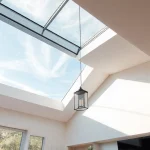The Ultimate Guide to Maintaining Your Thatched Roof in a Picturesque UK Countryside Cottage
Understanding the Charm and Challenges of Thatched Roofs
Thatched roofs have been a staple of English country homes for centuries, adding a touch of rustic charm and historical significance to any cottage. However, these roofs require more maintenance than their modern counterparts to ensure they remain in good condition. If you’re the proud owner of a thatched property, understanding the intricacies of thatch maintenance is crucial to preserving the integrity and beauty of your home.
Choosing the Right Materials for Your Thatched Roof
The type of material used for thatching can significantly impact the durability and appearance of your roof. Here are some of the most common materials used:
Additional reading : Elevate your decor using chic frosted window film options
Water Reed
Water reed is one of the most popular choices for thatching due to its durability and water-resistant properties. It is often used in areas with high rainfall because it can withstand moisture better than other materials[2][4].
Long Straw
Long straw, including combed wheat reed, is another common material. It is lighter and easier to work with than water reed but may not be as durable. Long straw is often preferred for its aesthetic appeal and is commonly used in traditional English country homes[2][4].
Also to see : Year-round veggie oasis: your ultimate guide to repurposing a uk conservatory into a thriving greenhouse
Other Materials
Other materials like wheat reed and various types of grasses can also be used, depending on regional availability and climate. The choice of material should be based on the local environment and the desired look for your home.
Building and Layering the Thatch
The construction of a thatched roof is an art that requires precision and skill. Here’s a step-by-step guide on how it’s done:
Prepare the Framework
The first step is to build a sturdy framework that can support the weight of the thatch. Treated timber is recommended to ensure longevity. Each rafter should be evenly spaced to create a solid foundation for the thatch layers[4].
Layer the Thatch
The thatch material, whether it’s water reed or long straw, is laid in overlapping layers starting from the bottom of the roof and working upwards. This method creates a watertight seal and ensures uniform protection[4].
Secure the Thatch
Each layer of thatch must be securely tied to the framework using galvanized wire or rope. This prevents the thatch from shifting, especially during adverse weather conditions. Proper securing ensures the structure remains intact for years[4].
Maintenance Tips for Thatched Roofs
Regular maintenance is key to extending the life of your thatched roof. Here are some essential tips:
Regular Inspection
- Check for any loose or damaged sections of the thatch.
- Look for signs of wear, such as moss growth or leaks.
- Ensure the ridge of the roof is secure and not sagging[2][4].
Cleaning
- Remove debris like leaves and branches to prevent moisture retention.
- Regular cleaning helps prevent the accumulation of organic matter that can trap moisture and encourage rotting[2][4].
Pest Control
- Treat the roof to prevent infestations by pests like rodents or insects.
- Regularly inspect for any signs of pest activity and address it promptly[4].
Repairs
- Address minor issues promptly to avoid larger problems.
- Hire a skilled thatcher for any repairs to ensure they are carried out correctly[2][4].
Table: Comparison of Thatching Materials
| Material | Durability | Water Resistance | Aesthetic Appeal | Cost | Lifespan |
|---|---|---|---|---|---|
| Water Reed | High | High | Good | Moderate to High | 20-30 years |
| Long Straw | Medium to High | Medium | Excellent | Moderate | 15-25 years |
| Wheat Reed | Medium | Medium | Good | Low to Moderate | 15-20 years |
| Grasses | Low to Medium | Low | Fair | Low | 10-15 years |
Ensuring Longevity and Sustainability
Thatched roofs, when properly maintained, can last for decades and even centuries. Here’s how you can ensure the longevity and sustainability of your thatched roof:
Proper Drainage
- Ensure the roof has a steep pitch to allow rainwater to run off easily.
- This prevents moisture build-up that can lead to leaks and structural damage[2][4].
Natural Insulation
- Thatched roofs provide excellent natural insulation, helping to regulate the temperature inside your home.
- This reduces energy consumption and makes your home more sustainable[2][4].
Eco-Friendly Choice
- Thatching materials like Cape Reed are renewable resources that grow abundantly and regenerate quickly.
- Choosing these materials helps minimize your environmental footprint while adding lasting beauty to your property[4].
Quotes from Experts
- “A well-maintained thatched roof is not just a roof; it’s a piece of art that requires regular care to keep it looking its best,” says John Smith, a master thatcher with over 20 years of experience.
- “The key to a long-lasting thatched roof is regular inspection and prompt repairs. Neglecting maintenance can lead to costly repairs down the line,” advises Jane Doe, a thatching specialist.
Practical Insights and Actionable Advice
Here are some practical tips to help you maintain your thatched roof effectively:
Hire a Skilled Thatcher
- Regular maintenance tasks should be carried out by a skilled thatcher to ensure they are done correctly.
- Hiring a professional can extend the life of your roof and maintain its aesthetic appeal[2][4].
Use Local Materials
- Using locally sourced materials for repairs can promote sustainability and reduce costs.
- These materials are often more compatible with the existing thatch and can blend in seamlessly[2][4].
Keep Your Roof Clean
- Regularly clean your roof to remove debris and prevent moisture retention.
- This simple task can significantly extend the life of your thatched roof[2][4].
Maintaining a thatched roof is a commitment, but it is one that is well worth the effort. With the right materials, proper construction, and regular maintenance, your thatched roof can be a beautiful and functional part of your English country home for many years.
By following the tips and guidelines outlined in this complete guide, you can ensure that your thatched roof remains in excellent condition, providing natural light, insulation, and a unique charm to your home. Remember, a well-maintained thatched roof is not just a part of your house; it’s a part of your heritage and a reflection of your commitment to preserving traditional craftsmanship.
So, take the time to inspect your roof regularly, clean it thoroughly, and address any issues promptly. With a little care and attention, your thatched roof will continue to be a stunning feature of your picturesque UK countryside cottage.










